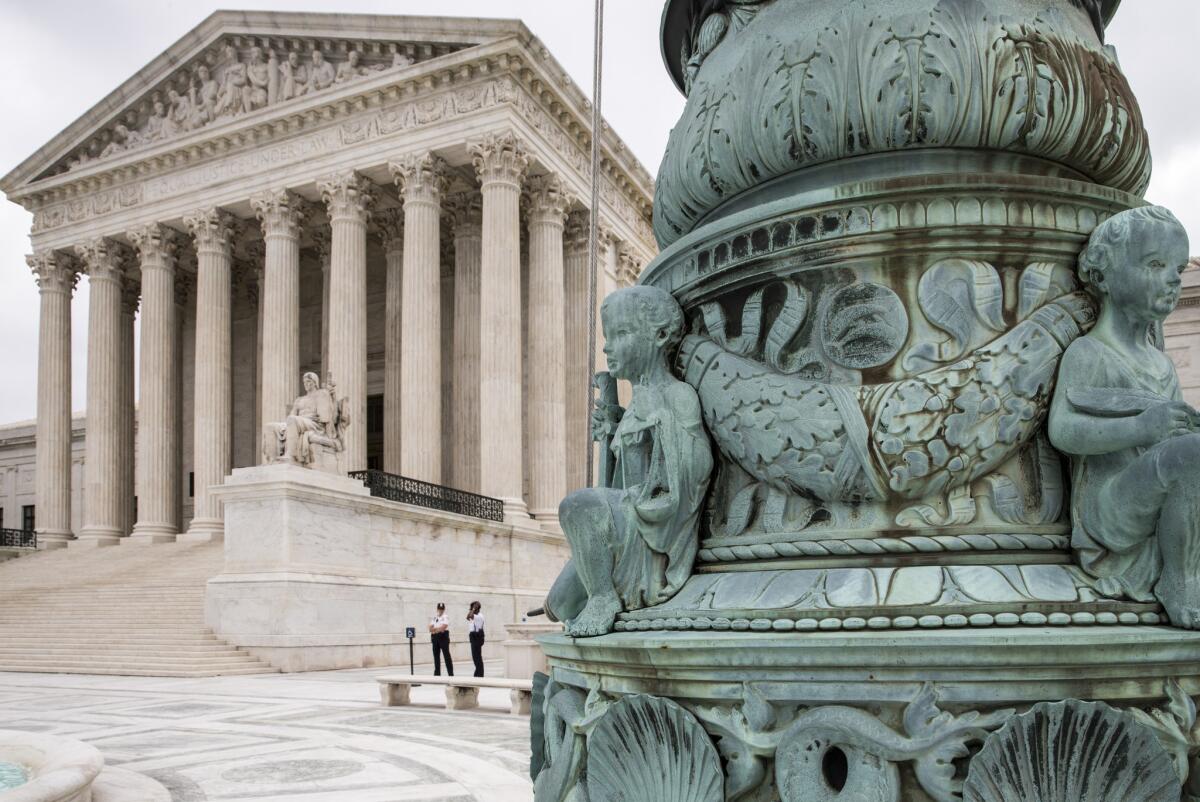Supreme Court rules for landowners fighting the government over wetlands

- Share via
Reporting from Washington — The U.S. Supreme Court ruled for landowners Tuesday who are fighting the government over whether their property includes protected wetlands.
In a unanimous decision, the justices said property owners may go to court and obtain a “prompt judicial review” of claims by federal environmental regulators that their dry land may in fact be a wetland.
This issue, while procedural, has arisen around the nation when home builders or companies announce plans to develop their land. Sometimes, the Army of Corps of Engineers and the Environmental Protection Agency assert the land contains protected wetlands and cannot be developed.
See more of our top stories on Facebook >>
These determinations rest on the claim—often disputed—that the land has a connection to the “navigable waters” of the United States.
In Tuesday’s ruling, the high court sided with a Minnesota company that wanted to mine a peat bog on its land which lies 120 miles from the Red River of the North, the nearest navigable river.
Nonetheless, the Army Corps determined this land was part of the “navigable waters” of the United States and subject to federal control because water could drain from there to the river.
The company was then left with two bad choices: seek a federal permit to begin mining the peat, which would cost more than $100,000 and take years to complete, or go ahead with their development and risk fines of up $37,000 a day and perhaps criminal prosecution for illegally discharging pollutants into protected waters.
SIGN UP for the free California Inc. business newsletter >>
The Supreme Court gave the landowners a third option. They could go to court and challenge the government’s claim that the peat bogs are connected to navigable waters. They “need not assume such risks [of huge fines] while waiting for EPA to drop the hammer in order to have their day in court,” said Chief Justice John G. Roberts in U.S. Army Corps of Engineers v. Hawkes Co.
In the past, the high court has been split on how to define the limit of federal control over wetlands. But more recently, all the justices have agreed that landowners should be permitted to challenge the decisions of federal environmental regulators.
Both the Army Corps and EPA have authority to enforce the Clean Water Act and protect against discharges of pollutants into U.S. waters. When challenged, the agencies have said landowners must apply for a permit and then, if necessary, go to court.
But the justices said they may go to court immediately in a decision that will likely be seen as strengthening property rights.
Justice Anthony M. Kennedy hinted he and others may go further if the judicial review proves ineffective. In a concurring opinion joined by Justices Samuel A. Alito Jr. and Clarence Thomas, Kennedy said he remained concerned about the “ominous reach” of environmental regulators.
This authority “continues to raise troubling questions regarding the government’s power to cast doubt on the full use and enjoyment of private property throughout the nation,” he said.
MORE FROM BUSINESS
Stocks mostly flat; energy firms rise along with oil prices
Consumer spending jumps the most in nearly seven years
Federal suit would take Google’s payday lending crackdown one step further
On Twitter: DavidGSavage
More to Read
Sign up for Essential California
The most important California stories and recommendations in your inbox every morning.
You may occasionally receive promotional content from the Los Angeles Times.











